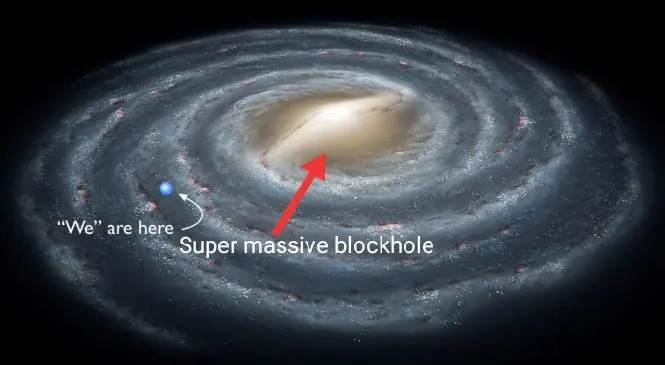
Scientists Baffled By Earth’s Mysterious 26-Second ‘Heartbeat’—Still No Clear Explanation
In a world where science has unlocked the secrets of distant galaxies and peered deep into the microscopic world of cells and atoms, there are still mysteries closer to home that continue to stump experts. One such enigma is the Earth’s puzzling 26-second “heartbeat”—a rhythmic seismic pulse that has baffled scientists for over half a century. Despite technological advances and extensive research, there is still no clear explanation for this strange and persistent phenomenon.
The pulse, first recorded in the early 1960s, is a subtle seismic signal that occurs every 26 seconds, like clockwork. It was initially dismissed as a minor anomaly—perhaps a recording error or background geological noise. But as more data poured in from seismic stations around the world, researchers confirmed that the signal was real, consistent, and oddly precise. Unlike earthquakes or volcanic tremors, which are irregular and explosive, this pulse is calm and rhythmic, almost as if the planet itself were ticking like a metronome.
Most seismic activity is caused by tectonic movements, volcanic activity, or human-induced actions like mining or drilling. However, the 26-second pulse doesn’t align with any of these patterns. It’s not linked to any known fault line or volcanic region. In fact, the epicenter of the pulse seems to be somewhere in the Gulf of Guinea, off the coast of West Africa—an area not particularly known for seismic unrest.
Over the years, scientists have proposed several theories. Some believe the pulse could be caused by waves crashing against the continental shelf, generating microseismic activity. Others have speculated that it might be related to ocean swell patterns or deep-sea geological formations. A few have even considered the possibility of resonance from the Earth’s natural frequencies—a sort of planetary hum.
Despite these ideas, none of the theories have been conclusively proven. The mystery remains unsolved, and researchers are left with more questions than answers. What kind of natural process could maintain such precise timing over decades? Why does the signal originate from the same region every time? And perhaps most intriguingly, what does this heartbeat tell us about the hidden mechanisms of our planet?
Part of what makes the 26-second pulse so fascinating is its consistency. Regardless of global climate changes, tectonic shifts, or human interference, the signal has persisted with remarkable stability. This regularity has led some scientists to joke that it’s like the Earth’s own heartbeat—a quiet, steady rhythm beneath the surface of our noisy, chaotic world.
The mystery has even caught the attention of conspiracy theorists and internet sleuths, who have suggested more outlandish explanations ranging from secret military experiments to signals from deep within the Earth’s core or even extraterrestrial activity. While these ideas are not supported by scientific evidence, they underscore the human fascination with the unexplained.
In an age where we often feel we’ve mapped and measured every corner of our world, the 26-second heartbeat is a humbling reminder that the Earth still holds secrets. Perhaps with further study, new instruments, and a fresh perspective, science will one day reveal the source of this strange seismic rhythm. Until then, the pulse continues—steady, silent, and unsolved—beneath our feet.
News in the same category


Could the Sahara Desert Power the Entire World with Solar Energy?

Drunk Bees? How Fermented Nectar Affects Honeybees in Australia

How Small Earth Is in the Universe—And Why That Should Inspire Us

$20 Trillion Tunnel Could Zip You From U.S. To U.K. In Just 54 Minutes

Deep-Sea Discovery: How “Battery Rocks” Are Producing Oxygen 4,000 Meters Below the Pacific

Understanding Evolution: Evidence That Species Evolve Over Time

Alfred Wegener: The Scientist Who Was Laughed at in 1912—But Changed Earth Science Forever

Shocking Discovery Beneath the Great Pyramid of Giza: Lost Advanced Technology?

Scientists Propose Cooling Earth By Spraying 12 Million Tons Of Particles From Boeing Jets

From Recycled Materials To Viral Fame: Teen’s Diy Lamborghini Replica Turns Heads

Astronomer Rides Simulation To The Edge Of The Universe—Chasing Light From The Big Bang

Controversial Inventor’s Mysterious Death Sparks Debate Over Alternative Energy Suppression

Largest Dinosaur Ever Discovered in Argentina: New Titanosaur Fossil Unearthed

Dark Oxygen" Discovered in Pacific Ocean: A Breakthrough in Understanding Life on Earth and Beyond

NASA’s New Telescope Could Detect Alien Life In Just Hours, Scientists Say

Astronomers Trace Decade-long Mystery Radio Signals to Binary Star System 1,600 Light-Years Away

Scientists Warn: Global Warming Could Reach 7°C by 2200, Triggering Catastrophic Climate Disasters

Plastic Bag Found in Mariana Trench: A Deep Warning About Ocean Pollution
News Post

🧄🌿 Natural Remedy for Leg Pain, Rheumatism, Varicose Veins & Arthritis with Cloves and Garlic

Modern House Fires Burn Faster: Why You May Have Only 3 Minutes to Escape

White Clover (Trifolium repens): 15 Benefits and Homemade Uses

A Mom of 7 Demanded My Deaf Grandpa Get Out of the Elevator—So I Brought Her Back to Reality

Could the Sahara Desert Power the Entire World with Solar Energy?

Breakthrough Protein Combo Could Heal Heart Damage and Regenerate Organs

Head Injuries May Reactivate Dormant Viruses and Trigger Alzheimer’s-Like Brain Damage

How Blood Production Changes After 70: New Research Reveals a Surprising Shift

My Ex-husband Got Our House, Car and All Our Money After Divorce – I Laughed Because That Was Exactly What I Planned

My Husband Cheated on Me With Secretary, Then Karma Crushed Him Back

My Husband Didn't Meet Me at the Hospital Discharge with Our Newborn – When I Found Out His Reason, I Went Pale

Mom of Quintuplets Can’t Pay For Groceries, Voice behind Says, ‘Your Bill Is Already Covered’

Drunk Bees? How Fermented Nectar Affects Honeybees in Australia

How Small Earth Is in the Universe—And Why That Should Inspire Us

What Is Acid Reflux? Causes, Symptoms, and How to Prevent GERD

AI and Eye Scans: A Breakthrough in Fast, Accurate ADHD Diagnosis

Early Signs of Heart Disease: What Chest Pain, Shortness of Breath, and Swollen Legs Could Mean

Groundbreaking Nanoparticle Technology Reverses Parkinson’s Disease in Stunning Study

This Psychedelic Root from Brazil May Be Able to Treat Depression
